| Home Eclipse Home Solar Eclipse 1999 2001 2002 2005 2008 2012 | Site Map |
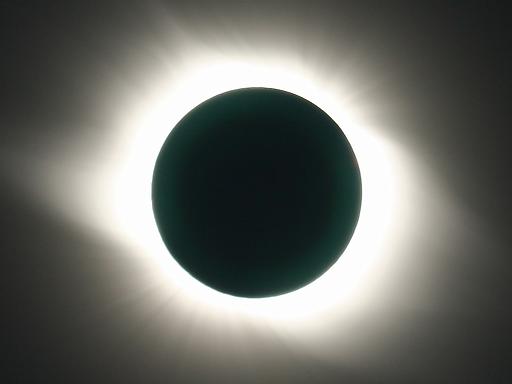 The outer corona.
The outer corona.
Canon 350D + 70-300 DO at 300mm.
Exposure: 1/4 sec, f/8, 100 ISO.
On August 1st, 2008, I and 28 other Danes, a group of Germans and a
group of Swiss found ourselves in the Gobi Desert in the south-western
corner of Mongolia.
The exact position was
45° 57.515' N, 91° 48.098' E,
about 1 km south-west for the center line.
It took several days in old Russian 4WD minibuses to get to this remote position. And we were not alone in the desert - we met several other convoys on the way to the totality zone. These buses can drive anywhere, but neither comfort nor safety are up to western standards. But we survived.
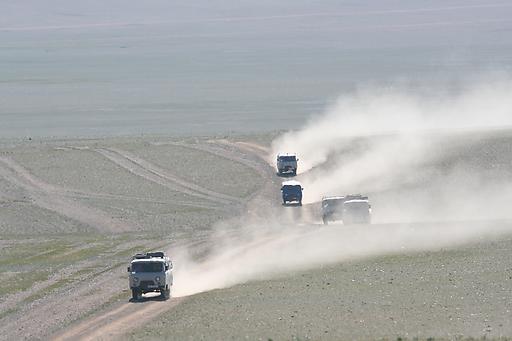 Heavy traffic on the roads towards the totality zone.
Heavy traffic on the roads towards the totality zone.
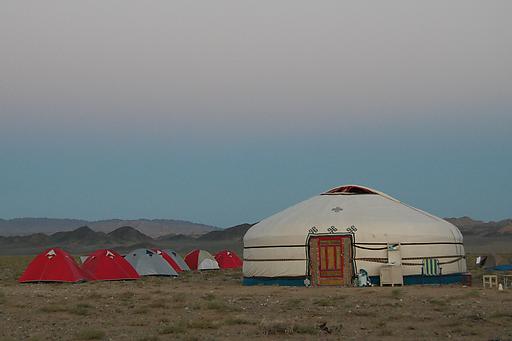 The eclipse camp shortly before sunrise E-day morning.
The eclipse camp shortly before sunrise E-day morning.
The dark blue band over the horizon is the Earth's shadow.
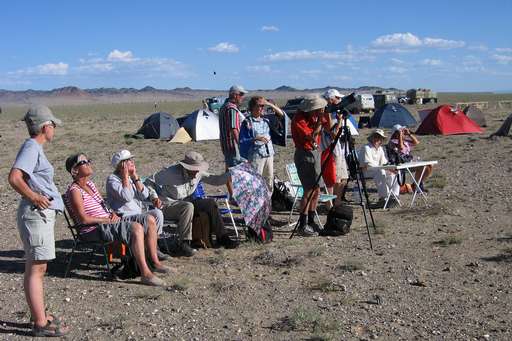 The initial partial phase.
The initial partial phase.
The clouds stayed neatly in the horizon.
It was my fourth total solar eclipse, the third successful and the first on a perfectly clear sky. There were some clouds low in the horizon over the Altai Mountains, and some of the other participants had noted that these clouds suddenly went black shortly before C2. I didn't notice that - so many things happen in so short a time that it is absolutely impossible to see it all.
It was the brightest eclipse I have yet seen. It was not darker than a twilight, so one could easily see the surroundings during totality.
We are in the middle of a sunspot minimum, so I wondered whether there would be any prominences visible at all. But fortunately there was a single large one at "two o'clock position" and some smaller ones at "four-to-five o'clock position".
A total solar eclipse is still a fantastic experience, definitely worth travelling to remote locations to see. Though I no longer get my feet knocked off, as happened at the first one in Hungary in 1999.
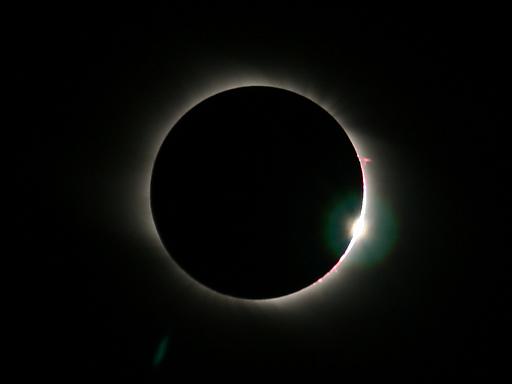 The diamond ring at C3 (11:05:19 UT).
The diamond ring at C3 (11:05:19 UT).
The prominences are visible.
Canon 350D + 70-300 DO at 300mm.
Exposure: 1/250 sec, f/8, 100 ISO.
Text and photos: Stig Linander, created: 2008-08-19, last revised: 2009-01-01